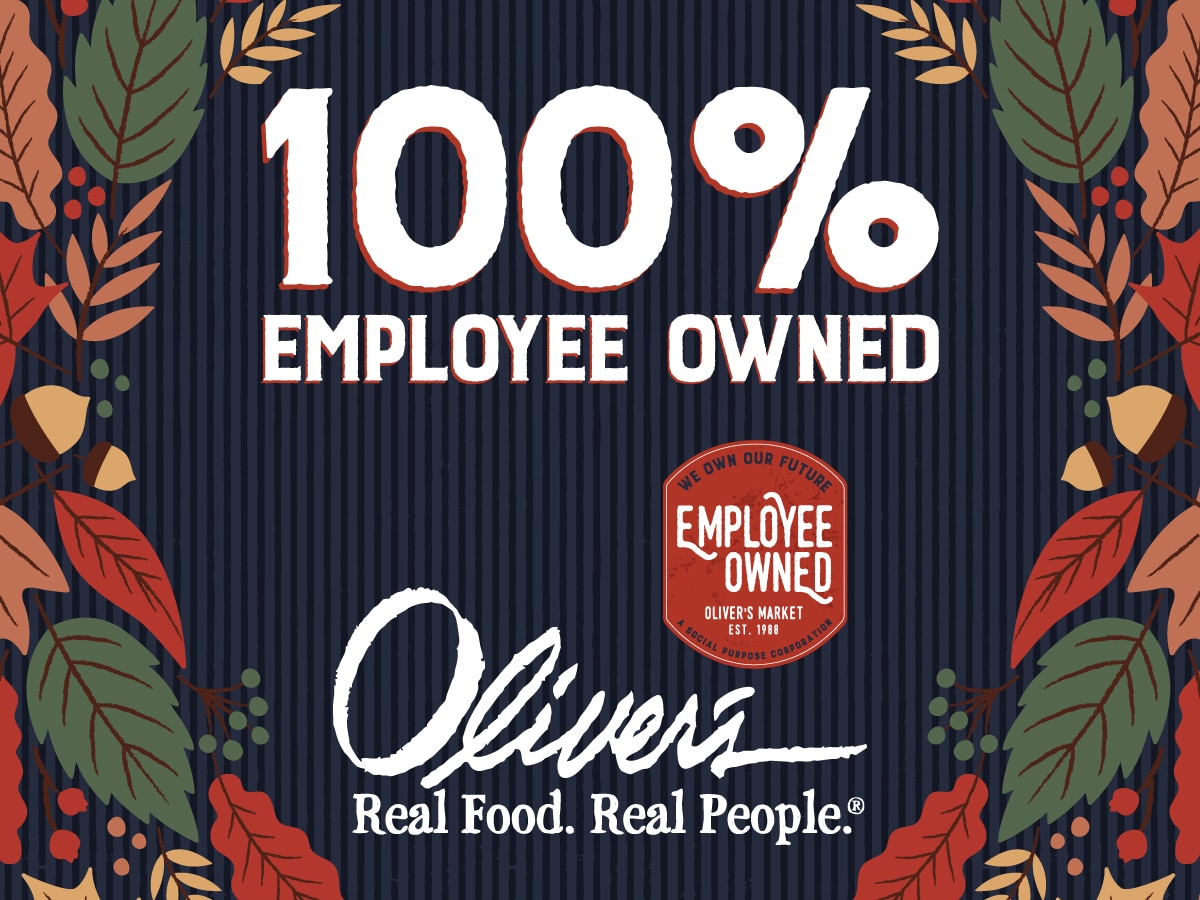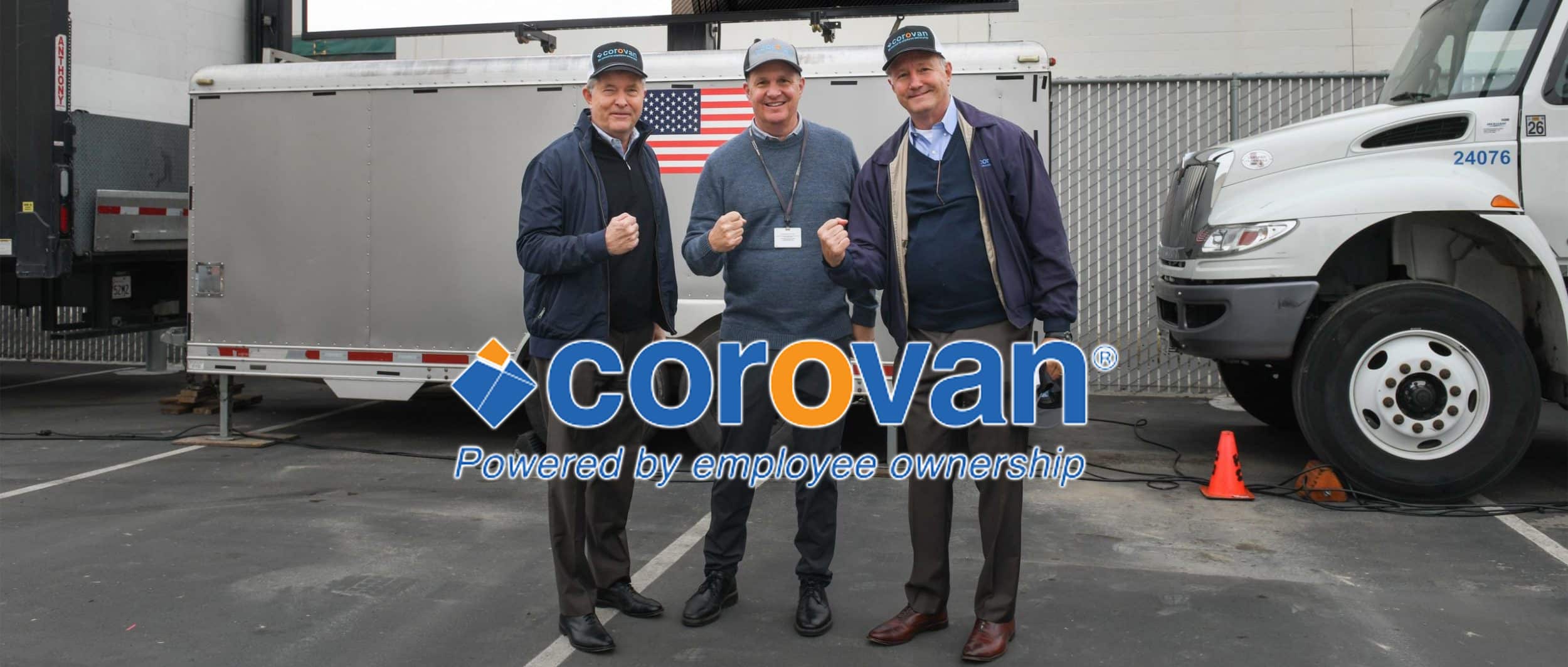This tax benefit derives from IRC Section 402(e)(4)(B), which provides that the employee will not be taxed at the time of distribution on the net unrealized appreciation attributable to employer securities. The result is that the employee pays tax on the cumulative cost basis of the employer securities at the time of distribution, and pays a long term capital gains tax on the appreciation at the time that the stock is sold back to the plan or to the company, as the case may be.

Thus, in the case of plans that have relatively large account balances, it is often desirable to have all distributions made in the form of company stock so that participants can take advantage of the lower capital gains tax rate applicable to the appreciation of the stock.
Another frequent reason for making distributions in the form of company stock is to enable the company to shrink the percentage of company stock that is held by the ESOP. Generally, reducing the percentage of company stock that is held by an ESOP can be accomplished in either of two ways. One approach is to simply have the company repurchase a block of company stock directly from the ESOP. This approach, however, can result in a “prohibited transaction” since it necessarily involves a purchase and sale of stock between the plan and a “party-in-interest.” Thus, if the transaction does not meet the conditions for an exemption under Section 408(e) of ERISA, the fiduciaries can be held liable for breach of fiduciary duties.
This potential liability, however, can be entirely avoided by having the shares first distributed to participants and then repurchased by the company (or by the plan). Under this approach, there is no transaction between the plan and a party-in-interest. Thus, there is no possibility of having engaged in a “prohibited transaction.”
There can be any number of good reasons for wanting to shrink the percentage of stock that is held by the ESOP. One reason might be to reduce the company’s future repurchase liability. Another reason might be that continued repurchases of company stock by the plan would result in existing employees owning all or most of the stock, whereas repurchase of the stock by the company and re-contribution of this stock to the ESOP is a subsequent year would result in giving new employees a greater allocation of this stock.
Many privately-held companies, however, have been hesitant to make distributions in the form of shares of company stock out of fear that a disgruntled employee may decide to keep the stock and thereafter become a nuisance by attending shareholder meetings, blocking shareholder actions, and demanding to see copies of the company’s financial statements.
For the most part, these fears are unfounded. Assuming that the former employee would, at most, hold a 1% or 2% interest in the company, there is very little that such an employee could do to block actions taken at a shareholders meeting. On the other hand, a 1% shareholder could make it impossible to take action by unanimous written consent of shareholders, which would avoid the necessity of having an actual shareholder ‘s meeting.
In many states, the company’s bylaws are permitted to contain a provision that prevents shareholders owning less than 5% of the outstanding stock from demanding copies of the company’s financial statements. Even if a former employee is able to obtain copies of the company’s financial statements, however, there is usually nothing in these statements that will be of nuisance value to the employee.
It should also be remembered that under the provisions of §409(h)(4) of the Code, if a participant elects to receive shares of company stock, the participant must be given a “put” option, but the participant can only exercise the “put” option during two “window” periods. The first window is the 60-day period following the date of distribution, and the second window is any 60-day period during the following plan year. The purpose of giving the participant two “put” option window periods is to enable the participant to hold the stock until the following plan year when the updated appraisal may result in a higher stock price. If, for example, the distribution is made in a year when the valuation happens to be down, the participant is not necessarily penalized if he has the ability to sell his stock in the following year when the stock may have recovered some or all of its value. Similarly, if the distribution is made during given plan year and it is obvious that the stock will have a significantly higher value at the end of that year, the second “put” option window enables the participant to capture that addition appreciation.
On the other hand, it a participant does not exercise the “put” during either the first window period or the second window period, the “put” option period lapses and the participant thereafter has no assurance that the company or the plan will repurchase his or her shares. In addition, once the “put” option lapses, the value of the stock may drop 25% to 35% in value due to the discount for lack of marketability that would then apply.
The net effect of the “put” option provisions §409(h)(4) of the Code is to give the participant some additional upside potential rather than forcing the participant to cash out his shares at the time of distribution. The provisions of §409(h)(4) also serve to exert great pressure on the participant to exercise his or her “put” option prior to the expiration date. Nevertheless, nothing in §409(h)(4) prevents a truly disgruntled employee from electing to keep his or her shares despite the expiration of the “put” options.
Thus, from the perspective of most privately-held companies, the ideal scenario is for the plan to have the ability to make distributions in the form of shares of company stock, and for the company or the plan to have the ability to immediately “call” the stock in exchange cash (or in exchange for a promissory note payable in five equal annual installments).
Also, now that ESOPs are permitted to own part or all of the stock of an S corporation, it is even more important that the company and/or the plan have some type of “call” option on the stock upon distribution from the plan lest the number of shareholders exceed 100, thereby causing an automatic termination of the S election. The ESOP only counts as one shareholder. Thus, this problem only arises if stock distributions cause the total number of shareholders to exceed 100 at any given moment in time.
The ESOP was first defined thirty years ago in the Employee Retirement Income Security Act of 1974 (“ERISA”). Ever since that date, privately-held companies have lobbied to have the Code amended to provide for a “call” option on all shares of company stock that are distributed from an ESOP. During the ensuing years, employers have been somewhat successful in securing tax law provision that further restrict the ability of participants to retain ownership of shares that have been distributed from an ESOP. Despite these successes, however, employers have never been successful in their attempt to secure a pure “call” option on shares that have been distributed from an ESOP.
ERISA amended the Internal Revenue Code to add only three provisions relating to ESOPs. The first provision (§4975(e)(7) of the Code) defined the term “Employee Stock Ownership Plan to mean a defined contribution plan which is a stock bonus plan which is qualified, or a stock bonus and a money purchase plan both of which are qualified under Section 401(a), and which are designed to invest primarily in qualifying employer securities. The second provision (§4975(e)(8) of the Code) defined “Qualifying Employer Security” to mean an employer security which is stock or otherwise an equity security. The third provision (§4975(d)(7) of the Code) provided an exemption from the prohibited transaction rules of §4975(c) of the Code for any loan to an ESOP if such loan is primarily for the benefit of participants and beneficiaries of the plan, if such loan is at a reasonable rate of interest, and if any collateral given to a disqualified person by the plan consists only of qualifying employer securities. Subsection (B) of §4975(e)(7) then left if up to the Secretary of the Treasury to further define the rights and restrictions applicable to ESOPs.
The Tax Reduction Act of 1975 added a new type of ESOP to the tax code called the “Tax Reduction Act ESOP (“TRASOP”). The Tax Reduction Act of 1975, among other things, amended §46 of the Code to increase the investment tax credit from 7% to 10%, and further amended §46 of the Code to provide for an additional 1% investment tax credit, provided that the company would contribute shares of company stock to the TRASOP having a value equal to 1% of the amount of investment tax credit property purchased by the company. Section 301(d)(3) of the Act for the first time spelled out the requirement that allocations in a TRASOP must be in direct proportion to relative employee compensation, §301(d)(4) of the Act provided that no stock could be distributed before the end of the investment tax credit holding period (84 months) except in the case of separation from service, death or disability, and §302(d)(9) provided that “employer securities” meant common stock having voting power and dividend rights no less favorable than the voting power and dividend rights of other common stock issued by the employer.
It should be noted that the 1975 Act was entirely silent as to whether distributions from a TRASOP could be made in cash rather than in stock. Nevertheless, it was clear that distributions could only be made in the form of employer securities due to the fact that ERISA defined the ESOP as a stock bonus plan, and Treas. Reg. §1.401-1(a)(2)(iii) required that a stock bonus plan must distribute benefits in the form of employer securities in order to remain as a qualified plan.
What is particularly interesting, however, is the fact that the 1975 Act contained no requirement that the employer provide a “put” option with respect to employer securities that were not readily tradable. Apparently, few if any privately-held firms at that time sponsored stock bonus plans, so it was assumed that the stock was publicly tradable and could be simply sold in the market.
On November 4, 1976, the IRS published temporary regulations regarding ESOPs and TRASOPs. These temporary regulations were published in T.I.R. 1413 and were in the form of questions and answers. T.I.R. 1413 contained only two questions relating to rights and restrictions on employer securities distributed from an ESOP.
The first question was whether the employer could have a right of refusal, and the answer was yes:
“Q: May an employee who receives employer stock from an ESOP trust be required to offer to sell the stock to the employer before offering to sell it to a third party?”
“A: Yes. However, the agreement providing for this arrangement must also provide that the selling price of the stock (to be paid to the employee) shall not be less than its fair market value. Furthermore, in no event may the employer offer a price less than that offered to the employee by another potential buyer making a bona fide offer.”
The second question was whether the employer could have a call option on employer securities distributed from an ESOP, and the answer was no:
“Q: May an ESOP of the stock bonus type provide that upon receipt of employer securities distributed by the ESOP trust, the employee is required to sell such securities to the employer within a specified period?”
“A: No. Section 1.401(b)(1)(iii) of the Income Tax Regulations require a stock bonus plan to distribute benefits in stock of the employer company. If the distribution is conditioned upon the sale of such stock to the employer within a specified period, the effect is to distribute cash, rather than employer stock, to the employee, contrary to the requirements of section 1.401(b)((1)(iii).”
Here again, however, it is interesting to note that T.I.R. 1413 did not contain any requirement the employer provide a “put” option with respect to employer securities that were not readily tradable.
On July 30, 1976, the IRS issued proposed regulations that would have superseded the temporary regulation. However, the proposed regulations contained many provisions that were regarded by tax practitioners as being overly restrictive, including a requirement that would have required that all voting rights be passed through to participants. The proposed regulations were, in effect, nullified by the provisions of Section 803(h) of the Tax Reform Act that was passed later that year.
After holding extensive public hearings, the IRS then issued so-called “final regulations” on ESOPs on November 17, 1978. These are the regulations set forth in §54.4975-7, §54.4975-11 and §54.4975-12 of the IRC regulations. These regulations set forth very detailed rules and regulation regarding “ESOP requirements” that for the most part still apply to this day.
The final regulations contained four specific provisions which created a “bright line” with respect to permitted rights and options on shares of employer securities.
First, the regulations provided that qualifying employer securities could, but need not, be subject to a right of first refusal, unless such securities were publicly traded at the time the right could be exercised (§59.4975-7(b)(9)). Second, the regulations provided that qualifying employer securities must be subject to a “put” option if such securities are not publicly traded at the time of distribution (§59.4975-7(10)). Third, the regulations provided that employer securities acquired by an ESOP could not be subject to a put, call, or other option, or buy-sell or similar arrangement, while held by the plan or when distributed from the plan, other than the “put” option and the “right of first refusal” provision described above (§59.4975-7(b)(4)). Fourth, the final regulations provided that benefits distributable from an ESOP (other than cash dividends) were distributable only in stock of the employer (§54.4975-11(f)(1)).
The preamble to the final ESOP regulations contain much useful information as to the background and rationale for many of the provisions contained in the final regulations, but contain no discussion whatsoever as to why the authors of these regulations chose to prohibit any type of “call” option on ESOP shares. One can surmise, however, that the prohibition on any type of call option was not based upon the argument that a call option would, in effect, result in a cash distribution, and, therefore, would be inconsistent with the fundamental nature of an ESOP. Although it is true that the final regulations prohibit distributions in cash, the provisions of a call option would not violate this requirement. Just as in the case of a put option, the benefit would be distributed in stock of the employer. The only difference would be that in one case the stock would be put at the option of the employee, and in the other case the stock would be called at the option of the employer.
Rather, it can be surmised that the prohibition on any type of call option was based upon a policy consideration that an employee should not be forced to sell his or her shares merely because he or she was no longer a participant in the plan.
The Revenue Act of 1978 was signed by the President on November 7, 1978. Many of the provisions of the final ESOP regulations and the final TRASOP regulations were, in effect, superceded by the provisions of the Revenue Act of 1978 even before the final regulations were published on November 17, 1978.
The reason for these changes were described in the report of the Senate Finance Committee, filed October 1, 1978, as follows:
“The ESOP provisions and the TRASOP provisions have now been part of the tax laws for several years. Experience in the operation of these provisions has indicated that several changes are appropriate. In addition, based on experience since the Tax Reduction Act of 1975, the committee has determined that the TRASOP provisions should be made permanent and should be made a part of the Code.”
Section 141 of the Revenue Act of 1978 rewrote the ESOP final regulations and the final TRASOP regulations and made them part of the Code for the first time by amending the tax code to add new §409A to the Code. New §409A replaced the term “TRASOP” with the term “Tax Credit ESOP”, and defined an ESOP in subsection (a) as a defined contribution plan which (1) meets the requirement of section 401(a), (2) is designed to invest primarily in employer securities, and (3) meets the requirements of subsections (b), (c), (d), (e), (f), (g) and (h) of this section.
New subsection 409A(h) spelled out the new distribution requirements for ESOPs. Subsection 409A(h)(1) provided that:
“(1) In General. – A plan meets the requirement of this subsection if a participant who is entitled to a distribution from the plan-
“(A) has a right to demand that his benefits be distributed in the form of employer securities, and
(B) if the employer securities are not readily tradable on an established market, has a right to require that the employer repurchase employer securities under a fair valuation formula.”
Subsection 409A(h)(2) then went on to provide that a plan would not fail to meet the requirements of 401(a) merely because under the plan the benefits might be distributed in cash or in the form of employer securities.
Thus, for the first time, ESOPs were permitted to make distributions in cash. If, however, the distribution were made in the form of employer securities, then the employer was required to offer the participant a put option, as was the case under the ESOP final regulations.
The report of the Senate Finance Committee explained the reasons for now allowing the distribution to be made in cash as follows:
“The committee believes that any participant (or beneficiary) who receives a benefits distribution from an ESOP or a TRASOP (attributable to an ESOP loan or an additional investment tax credit) should be able to convert that stock interest in the employer to its cash equivalent. In fact, the committee recognizes that in the usual situation this conversion occurs almost simultaneously with the actual distribution. The committee believes that the administrative paper-work and expense which is required for the ESOP or TRASOP to make a distribution in stock and then immediately repurchase the stock for cash is unwarranted in most situations. Accordingly, the committee believes that this process should be simplified when the participant desires to receive this ESOP or TRASOP benefit in cash. However, if a participant wishes to actually receive this ESOP or TRASOP benefit in stock of the employer, and retain ownership of this stock, he should be able to do so, and he should have the future right to convert that stock interest to its cash equivalent through a “put option” to the employer or to the trust under the ESOP or the TRASOP. The committee believes that the terms of this ”put option” should not create a hardship for the participant, the ESOP or TRASOP, the employer or its shareholders.”
Despite the clarity of the Senate Finance Committee explanation, it was not clear that new §409A(h) applied to leveraged ESOPs as well as Tax Credit ESOPs. Accordingly, the Technical Correction Act of 1979 amended §409A(h) to make it clear that the provisions of §409A(h)(1)(b) and §409A(h)(2) also applied to leveraged ESOPs.
The Economic Recovery Act of 1981 replaced the ESOP 1% investment tax credit with an ESOP payroll-based tax credit equal of .5% of eligible payroll. The 1981 Act also amended §409A(h)(2) of the Code, relating to the right to demand employer securities to add the following new sentence:
“In the case of any employer whose charter of bylaws restrict the ownership of substantially all outstanding employer securities to employees or to a trust described in section 401(a), a plan which otherwise meets the requirement of this subsection or section 4975(e)(7) shall not be considered to have failed to meet the requirements of section 401(a) merely because it does not permit a participant to exercise the right described in paragraph (1)(A) if such plan provides that participants entitled to a distribution from the plan shall have a right to receive such distribution in cash.”
The Conference Committee Report to the 1981 Act explained the reason for this change as follows:
“The Senate amendment also changes the cash distribution and put-option rules to reflect certain State laws and corporate charter restrictions which prevent compliance with present law rules.”
The net effect of the 1981 Act was to limit the plan to two distribution options. Under the first option, the plan could make distributions either in cash or in employer stock. If the distribution was made in employer stock, the employer was required to offer a put option to sell the stock back to the employer. If the distribution was made in cash, the employee still had the right to demand distribution in the form of employer stock under §409A(h)(1), and the employer would then be required to offer a put option to sell the stock back to the employer under §409A(h)(1)(B).
Under the second option, if the company had a bylaw or charter restriction restricting the ownership of substantially all outstanding employer securities to employees or to a plan qualified under §401(a), then distribution could be made entirely in cash and the employee would have no right to demand distribution in the form of employer securities under §409A(h)(1)(a).
The net effect of the 1981 Act was to create a call option for those employers who by a bylaw or charter restriction restricting ownership of substantially all outstanding employer securities to employees or to a qualified.
The provisions of the 1981Act, however, had two negative consequences, one for employers and one for employees. The negative consequence for the employer was that the employer could only eliminate the right to demand stock under §409A(h)(1)(A) by making the distribution in cash. This would necessitate cashing out the participant’s employer securities within the plan prior to making the distribution in the form of cash. Thus, under this approach, the employer did not have the ability to shrink the amount of employer securities owned by the ESOP.
The negative consequence to the employee was that distribution in the form of cash eliminated any possibility that the employee could have a portion of his distribution taxed at long term capital gains tax rates rather than having the entire distribution taxed as ordinary income.
The Tax Reform Act of 1984 brought forth major new tax advantages for ESOP by adding the §1042 provisions (providing for the non-recognition of gain in the case of certain sales to an ESOP), the §404(k) provisions (providing for the deduction of certain dividends paid to an ESOP) and the §133 provisions (providing for the exclusion from taxation of 50% of the interest earned on certain ESOP loans) to the Internal Revenue Code, and by freezing the ESOP payroll tax credit at .5% through 1987. Despite these sweeping changes, however, the 1984 Act made no changes to ESOP distribution provisions in §409A(h) of the Code, other than to change the designation of §409A(h) to §409(h).
The Tax Reform Act of 1986 further amended §409(h)(2) to eliminate the two negative consequences described above by adding the following clause at the end of the first sentence of subsection (2):
“except that such plan may distribute employer securities subject to a requirement that such securities may be resold to the employer under the terms which meet the requirements of section 409(o)”.
The explanation for this change was set by the staff of the Joint Committee on Taxation in the Explanation of Technical Corrections Provisions of the Tax Reform Act of 1986 as follows:
“Effective as of the date of enactment, the Act permits a plan sponsored by a corporation whose by-laws or charter restrict the ownership of substantially all outstanding employer securities to employees or a trust described in section 401(a) to distribute employer securities in certain cases. If such a plan does distribute employer securities, the distribution requirements and put option requirements generally applicable to ESOPs (except for the requirement that the employee has a right to demand that the distribution be paid in employer securities) will apply to the distribution.”
The net effect of the 1986 amendment was to create a third distribution option in addition to the two distribution options described above. First, as before, if the employer did not have a bylaw or charter restriction, it could make distributions either in cash or in employer securities, subject to the requirement that the participant be given a right to demand employer securities and a right to put the securities back to the employer.
Second, as before, if the employer did have a bylaw or charter restriction, it could simply make a distribution in cash, in which case the employee would have no right to demand distribution in the form of employer securities.
Third, under the 1986 amendment, if the employer did have a bylaw or charter restriction, it could also make distributions in the form of employer securities (thereby enabling the employee to receive capital gains treatment on the net unrealized appreciation (“NUA”) and the employer to shrink amount of employer securities held by the ESOP), but the employer would then be required to provide a put option pursuant to the terms of §409(o) of the Code.
Unfortunately, this was not the solution employers were looking for. Under the 1986 amendment, an employer who had a properly crafted bylaw or charter restriction could make distribution in shares of employer stock and thereby provide its employees with the capital gains treatment on the NUA (while also shrinking the ESOP), but it did so at the peril of having a disgruntled employee decide to keep the stock rather than put the shares back to the employer.
The ideal solution would have been to amend §409(h)(2) to instead add the following clause at the end of subsection (2):
“except that such plan may distribute employer securities subject to a requirement that such securities must be immediately resold to the employer under a fair valuation formula.”
This language would in fact have provided a true call option. It would have given the employee the benefit of capital gains taxation, and it would have given the employer the protections that it would otherwise have had under the cash distribution option provided by the second sentence in §409(h)(2).
Worse yet, the 1986 amendment to §409(h)(2) was technically incorrect. As noted above, the 1986 amendment stated that the securities could be resold to the employer “under terms which met the requirements of section 409(o).”
The intent of the amendment was to say that the securities could be resold to the employer subject to the put option provision of §409(h)(4), §409(h)(5) and §409(h)(6). Instead, the amendment incorrectly referred to §409(o), which was the section that prescribed when distributions under an ESOP must commence.
Moreover, the 1986 amendment should have been added to the second sentence of §409(h)(2), not the first sentence of §409(2), since it is the second sentence that refers to companies that have a bylaw or charter restriction.
The ideal solution would have been to amend §409(h)(2) to instead add the following clause at the end of the second sentence of subsection (2):
“except that such plan may distribute employer securities subject to a requirement that such securities must be immediately resold to the employer under a fair valuation formula.”
This language would in fact have provided a true call option. It would have given the employee the benefit of capital gains taxation, and it would have given the employer the protections that it would otherwise have had under the cash distribution option provided by the second sentence in §409(h)(2).
The technical glitches were corrected by the Technical and Miscellaneous Revenue Act of 1988. The 1988 amendment revised the first sentence of §409(h)(2) to say, as it had said prior to the 1986 amendment, that ESOP benefits could be distributed in cash or in the form of employer securities, and revised the second sentence of §409(h)(2) to say that an employer having a bylaw or charter restriction could distribute employer securities “subject to a requirement that such securities may be resold to the employer under terms which meet the requirements of paragraph (1)(B).”
This amendment corrected the technical glitches, but still left employers with an imperfect fix, since it refers back to the requirement of paragraph (1)(B), which in turn refers to the put option provisions of subparagraphs (4), (5) and (6) of §409(h).
The most recent changes to §409(h) are the amendments that were made by the Taxpayer Relief Act of 1997. The 1997 Act made two changes to §409(h)(2). First, it split the two sentences of prior subsection (2) into two separate subparagraphs. The first sentence of prior subsection (2) is now denominated as subparagraph (A) and the second sentence of prior subsection (2) is now denominated as subparagraph (B). In addition, new clause (ii) now provides that subparagraph (B) shall apply to any ESOP that is maintained by (I) ”an employer whose charter or bylaws restrict ownership…”, or (II) “an S corporation”.
The Joint Committee of Taxation’s “General Explanation” of the 1997 Act explains the reason for this amendment as follows:
“It is possible that an S corporation may lose its status as such if the ESOP is required to give stock to plan participants, rather than cash equal to the value of the stock….The Act provides that ESOPs of S corporations may distribute cash to plan participants. Such a plan may distribute employer securities, as long as the employee has a right to require the employee to purchase the securities (as under the rules applicable to ESOPs generally).” (Emphasis added.)
Once again, this was not the solution S corporation employers were looking for. Under the foregoing provisions, if an S corporation wants the make ESOP distributions in cash, it can do so, and the employee will then have no right to demand distribution in shares of employer securities. However, if the S corporation employer wants to make distribution in the form of employer securities so that employees can receive capital gains treatment on NUA or so that the employer can shrink the ESOP, it can do so (even without having a bylaw or charter restriction, but it do so it the peril of having disgruntled employees decide to keep the stock rather than put the shares back to the employer.
Again, the ideal solution would have been to amend the last clause of §409(h)(2)(B)(i) to say that distribution can be entirely in cash, “except that such plan may distribute employer securities subject to a requirement that such securities must be immediately resold to the employer under a fair valuation formula.”







